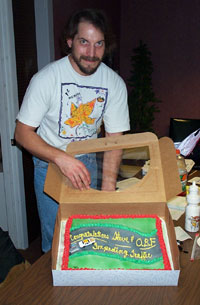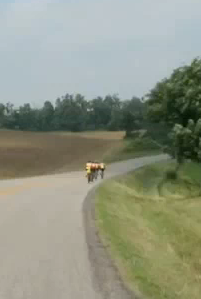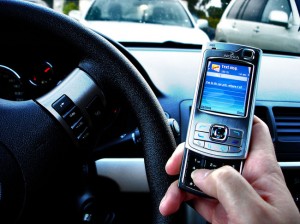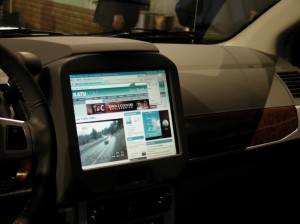OHIO BIKE LAWS
By Steven M. Magas, Ohio’s Bike Lawyer[1]
Have you ever wondered what “The Law” actually SAYS about riding a bicycle? Many Ohio riders might be familiar with some of the common rules or phrases. The “AFRAP” rule, for example. Many of us also have a sense that we have a “right” to ride our bicycles on the roadway, but where does that right come from? What limitations are there on that right? Can that right be taken away? Can cities pass their own bike laws? Can those be different from State Law?
A few years ago, a number of us on the Board of the Ohio Bicycle Federation took on the challenge of listing the most important laws applicable to cyclists in Ohio. You can read the actual results of our efforts on the OBF’s website.
Below are annotated excerpts of laws that EVERY Ohio Cyclist should be familiar with – at least those who want to venture out on the roadway. I’ve highlighted in bold some of the most critical language and have added my own commentary in italics to the original OBF commentary.
Where to start? Why at the beginning of course – with Title 45 of the Ohio Revised Code. “Title 45” contains the laws that govern operation of all vehicles on Ohio roads, including bicycles. The laws describe what a driver is required to do or prohibited from doing. But laws do not tell people how to drive. That is the function of a driver’s manual.
You can find ALL Ohio laws in the Ohio Revised Code, and the Traffic Laws in Title 45. If you actually go to the library and want to pull the books off the shelf, the entire Ohio Revised Code is a huge set of bright red books. The traffic laws are found in Title 45. Chapter 4511 of Title 45 contains the “Rules of the Road” and Chapter 4513 has the equipment rules.

Be warned, though, that these are only the STATE traffic laws. Ohio is a “Home Rule” state. The “Home Rule” provision in the Ohio Constitution allows local governments to pass their own laws. There are 88 counties in Ohio and hundreds of cities, villages, and other political, “ordinance-passing” jurisdictions. Each political body can and does pass its own laws. You will find local laws governing bicycle riding in many of these municipalities. Some of these local laws are… well… just stupid and contrary to state law [and common sense]. In fact, in the Bikelawyer’s Blog you’ll find an entire piece I wrote about The Stupid Laws.
I am including a discussion of the “Home Rule” issue… and how you might be able to fight a ticket using this complex legal theory… however, Bottom Line, ALWAYS CONSULT LOCAL LISTINGS for additional laws applicable in your neighborhood!
Attorney Chris Carville [The Kentucky Bike Lawyer] and I have created a lovely 4×6 card featuring the key elements of OHIO Bike Law and KENTUCKY Bike Law. Want some? Just WRITE ME A NOTE and I’ll send them to you. I can send you a few for your closest friends – or a dozen – or 50 or 100 – or even 1000+ if you’re really friendly. They make great Stocking Stuffers, Party Favors and Swag Bag Gifts!
Just SEND ME A NOTE at BikeLawyer@Me.Com and tell me how many you want, and where to send them!
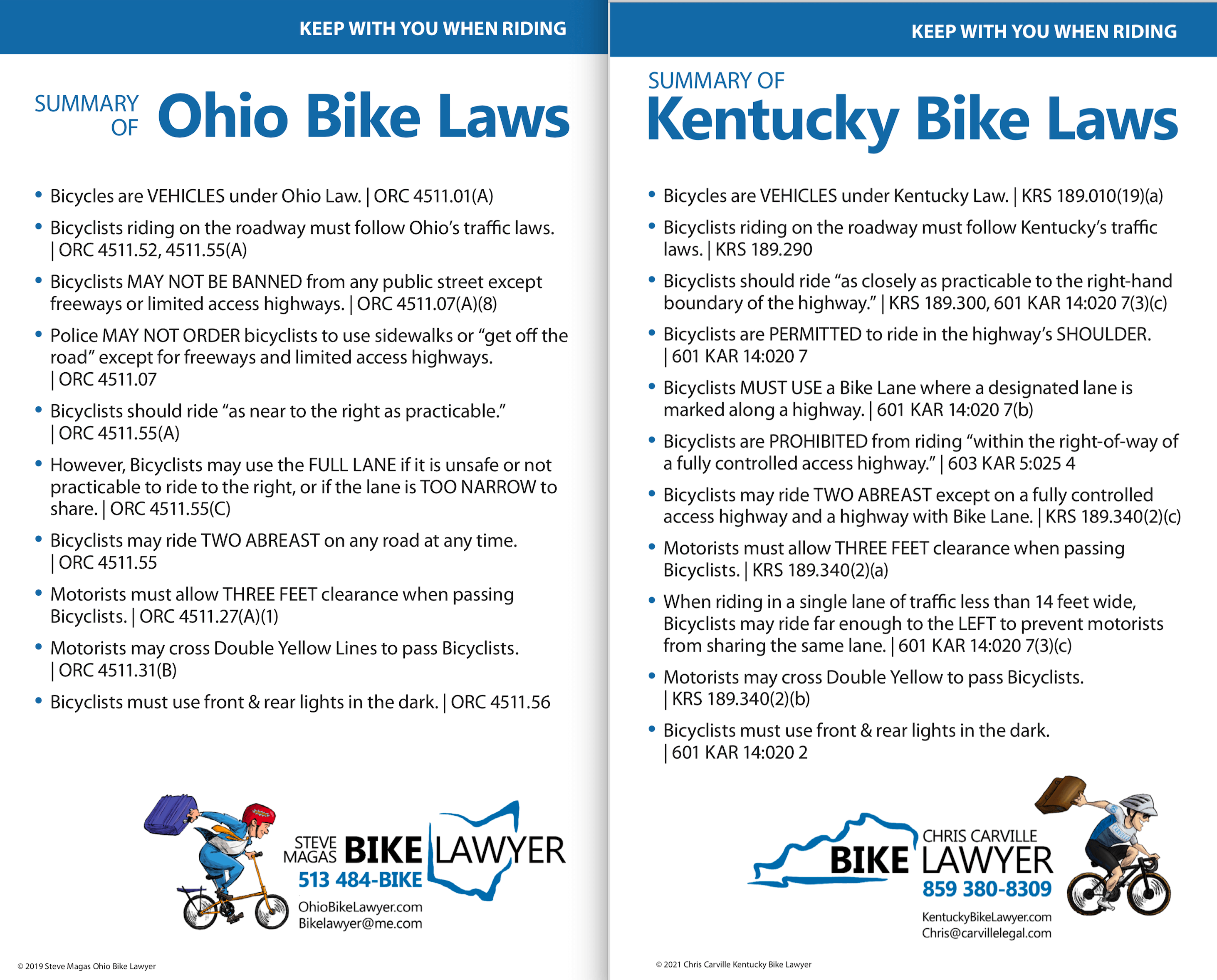
SO, without further ado, I present….. Ohio’s Bike Laws…
OHIO REVISED CODE
TITLE 45
4501.01. Definitions. As used in this chapter and Chapters 4503., 4505., 4507., 4509., 4511.,4513., 4515., and 4517. of the Revised Code, and in the penal laws, except as otherwise provided:
(A)”Vehicle” means every device, including a motorized bicycle, in, upon, or by which any person or property may be transported or drawn upon a highway, except that “vehicle” does not include any motorized wheelchair, any electric personal assistive mobility device, any device that is moved by power collected from overhead electric trolley wires or that is used exclusively upon stationary rails or tracks, or any device, other than a bicycle, that is moved by human power.
***
(G) “Bicycle” means every device, other than a device that is designed solely for use as a play vehicle by a child, that is propelled solely by human power upon which a person may ride, and that has two or more wheels, any of which is more than fourteen inches in diameter.
Comment: A History Lesson is in order here. In the 1880’s bicycle operators wielded a LOT of political power. The “Good Roads Movement” was an organized political effort to force municipalities to pave roads. Farmers and cyclists banded together with some business interests, but cyclists led the way. The newly formed “League of American Bicyclists” developed a following of more than 1,000,000 very quickly. Courts began to recognize cyclists as having rights on the roadways, particularly when those new-fangled MOTOR vehicles started popping up!
In the late 1800’s the very first Vehicle Codes started to be written to try to put some order on the roadways. In virtually every case, including Ohio, a “bicycle” was included in the definition of “vehicle” and was recognized as having a right to the roadway. Certain special provisions for bikes were put into play, but all in all, cyclists used their political clout to get us a spot on the pavement!
In Ohio, a bicycle is defined as a vehicle and thus is governed by a uniform set of rules common to all vehicles and a small set of specific rules for bicycles. (There are other specific rules for other vehicle types, such as trucks or busses.) The definition of what types of things are “bicycles” was recently revised to be broader in scope. The annotated list below summarizes the most important parts of the traffic rules and equipment rules that govern bicycle driving. People who try to make up their own rules have an accident rate five times higher than knowledgeable cyclists who follow the rules of the road.
This definition has changed a bit in recent years. When I first wrote this piece in 2010 it was limited to 2-wheelers and certain 3-wheelers. Well… the bike market and recumbent market has exploded since then and law was amended to capture any 3-wheel adult bicycle. Then we became aware of a problem involving a FOUR-wheeler… a fellow in Lakewood, Ohio was being told by Police there that he could not pedal a 4-wheeled bike around town with his autistic son because it didn’t meet the definition of “bicycle” in the Code. So… we pushed to change the definition again, and the final version, shown above, came into being.
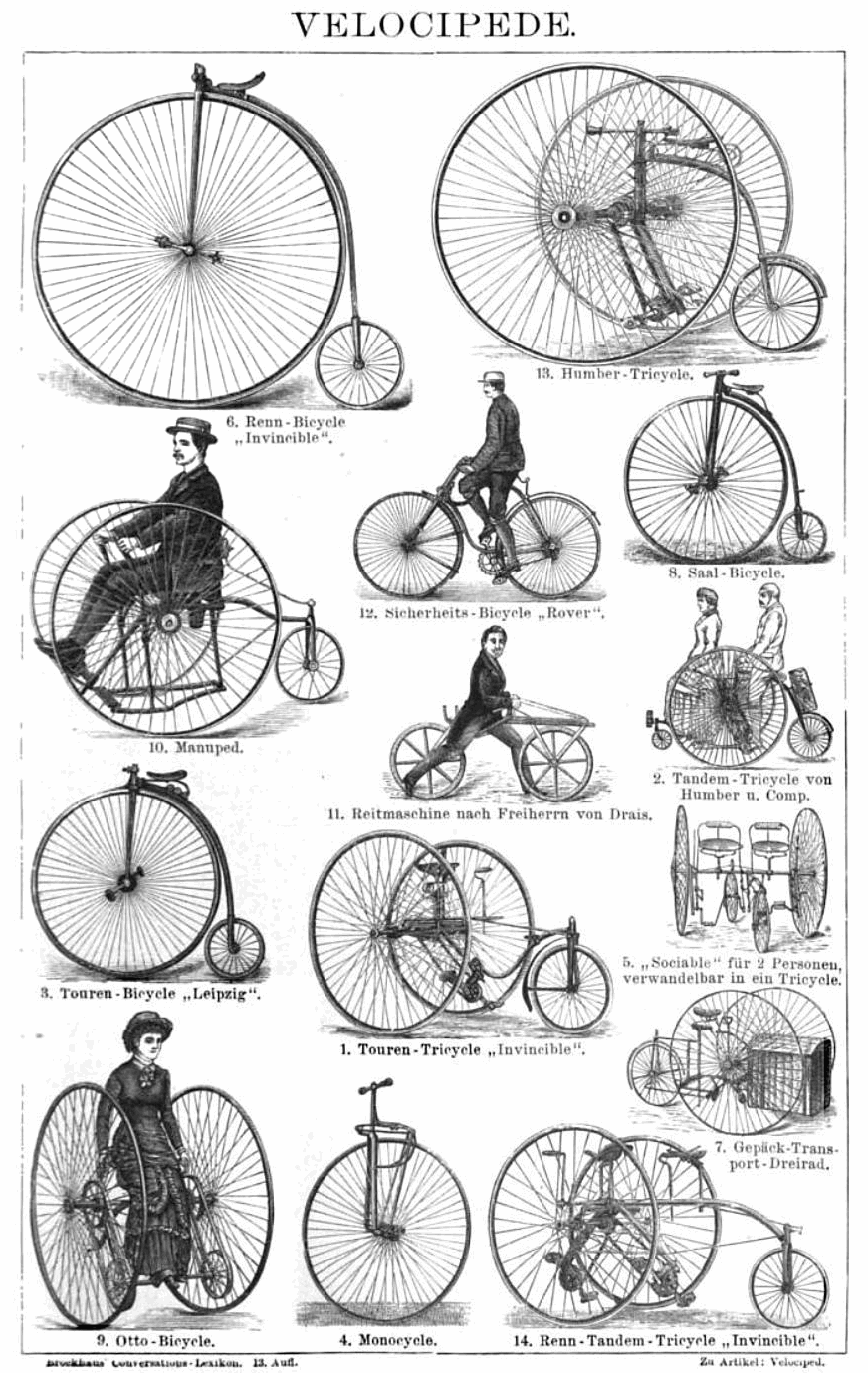
4511.07. Local traffic regulations.
(A) Sections 4511.01 to 4511.78, 4511.99, and 4513.01 to 4513.37 of the Revised Code do not prevent local authorities from carrying out the following activities with respect to streets and highways under their jurisdiction and within the reasonable exercise of the police power:
***
(8) Regulating the operation of bicycles: provided that no such regulation shall be fundamentally inconsistent with the uniform rules of the road prescribed by this chapter and that no such regulation shall prohibit the use of bicycles on any public street or highway except as provided in section 4511.051 of the Revised Code;
(9) Requiring the registration and licensing of bicycles, including the requirement of a registration fee for residents of the local authority;
(B) No ordinance or regulation enacted under division (A)(4), (5), (6), (7), (8), or (10) of this section shall be effective until signs giving notice of the local traffic regulations are posted upon or at the entrance to the highway or part of the highway affected, as may be most appropriate.
Comment: When we looked at the state of the law in preparing the 2006 Better Bicycling Bill, there was a lot of discussion of the patchwork quilt of local laws that all of us faced. In the Cincinnati area alone, there are more than FORTY separate jurisdictions capable of passing “bike laws.” The number near Cleveland was even higher. Since there was no restriction on what those laws could say, we often found neighboring cities would have wildly different “bike laws.” Not only did this make it difficult for cyclists to know and obey local law, it just didn’t make sense.
The most important of the reforms passed in the 2006 Better Bicycling Bill requires that any local regulations be consistent with the uniform rules of the road. In addition, signs are required to tell of any permitted local regulations. Unfortunately, some communities have been very slow to remove non-conforming ordinances that mandate unsafe practices.
You MUST know your local rules. Sometimes local laws get passed that are just…stupid. For a review of some of those you can read my piece here- a Guide to the Stupid Laws.
However…
Ohio is a HOME RULE STATE! This means that cities have the power under the Ohio Constitution to do their own thing- write their own laws… on some topics…Home Rule litigation erupts when a city passes a law that someone doesn’t like- the law conflicts with State Law and the offended party claims that State Law should be uniform such that the city does not have the power to write a conflicting law. The test for this is…complicated…

4511.22. Slow Speed
(A) No person shall stop or operate a vehicle, trackless trolley, or street car at such an unreasonably slow speed as to impede or block the normal and reasonable movement of traffic, except when stopping or reduced speed is necessary for safe operation or to comply with law.
***
(C) In a case involving a violation of this section, the trier of fact, in determining whether the vehicle was being operated at an unreasonably slow speed, shall consider the capabilities of the vehicle and its operator.
Comment: The “slow speed” statute was amended in 2006 as the result of a case I handled – State v. Selz. In the Selz case, Steve Selz was a true “transportation cyclist” – he owned no car and went everywhere by bike. In 1999, Steve was riding on S.R. 44 in Trotwood – a 5 lane, 45 mph roadway. After stopping at a light, Steve pedaled off in the right lane, with cars behind him. A police officer didn’t like seeing the cars behind him and pulled him over, citing him for “impeding traffic.”
I took the case pro bono, to try to help Steve out. At trial, we presented expert testimony that what Steve did was perfectly appropriate and that his speed was appropriate FOR A CYCLIST. The prosecution argued that if he could not travel at the 45 mph speed limit, he shouldn’t be on the road blocking “traffic.” I argued that under the definition of traffic in the Revised Code, Steve WAS “traffic” just like any slow moving vehicle.
The trial judge disagreed and found Steve Guilty. We appealed and, with the help of the OBF, publicized Steve’s case through the Internet. Trotwood got emails from all over the WORLD chastising it for prosecuting Steve. We won a 2-1 decision on appeal, with the court holding that in analyzing an “impeding traffic” charge, the court must consider the capabilities of the vehicle and its operator. Since the officer conceded that Steve was going at a reasonable speed for a cyclist, the court overturned the conviction.
When we looked at the state of the law in preparing the 2006 Better Bicycling Bill, we thought it would be important to change the “Slow Speed” statute to incorporate the holding of State v. Selz and the highlighted language was added.
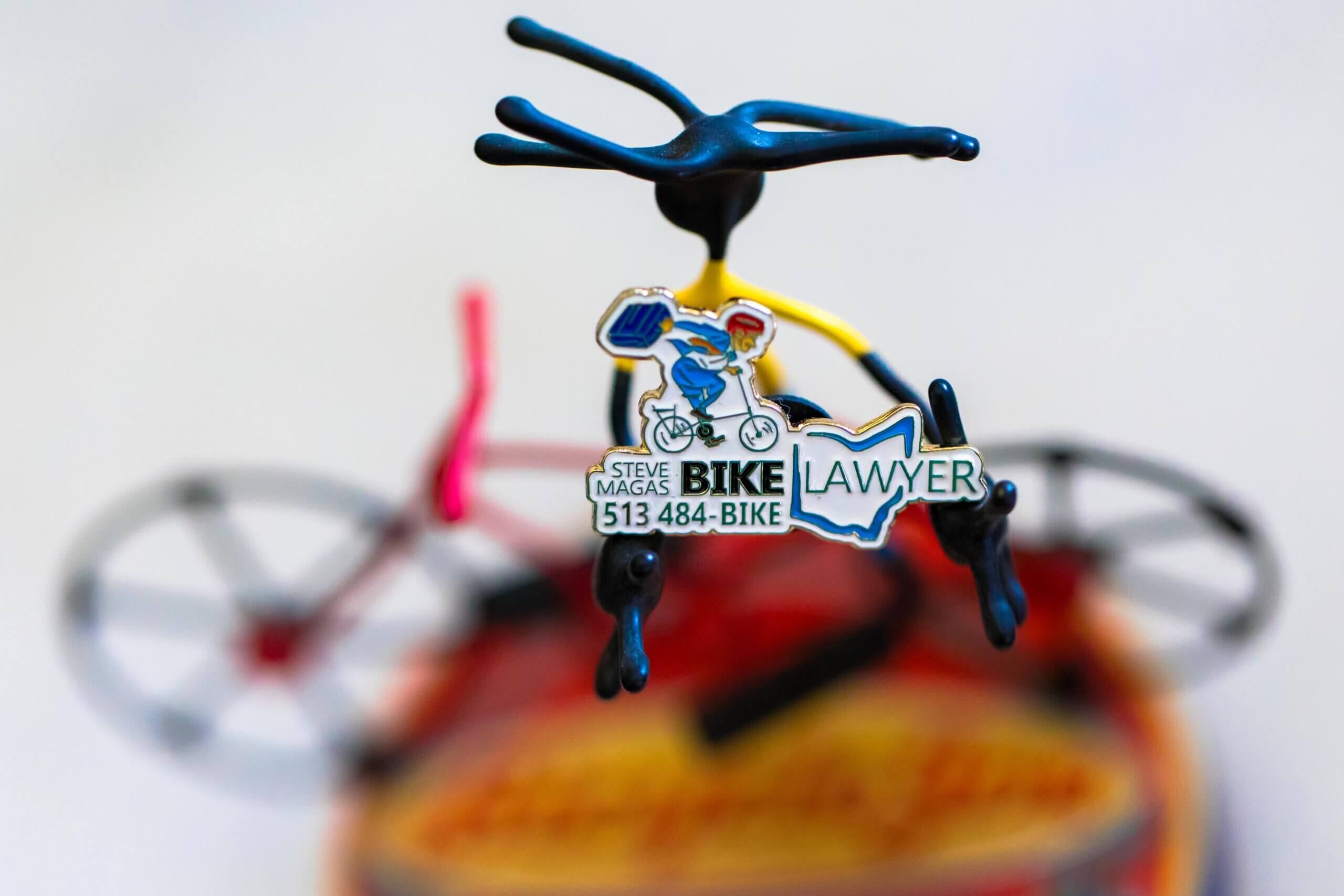
4511.25. Lanes of travel upon roadways of sufficient width.
(A) Upon all roadways of sufficient width, a vehicle or trackless trolley shall be driven upon the right half of the roadway except as follows:
(1) When overtaking and passing another vehicle proceeding in the same direction, or when making a left turn under the rules governing such movements;
(2) When an obstruction exists making it necessary to drive to the left of the center of the highway; provided, any person so doing shall yield the right of way to all vehicles traveling in the proper direction upon the unobstructed portion of the highway within such distance as to constitute an immediate hazard;
(3) When driving upon a roadway divided into three or more marked lanes for traffic under the rules applicable thereon;
(4) When driving upon a roadway designated and posted with signs for one-way traffic;
(5) When otherwise directed by a police officer or traffic control device.
(B)(1) Upon all roadways any vehicle or trackless trolley proceeding at less than the prevailing and lawful speed of traffic at the time and place and under the conditions then existing shall be driven in the right-hand lane then available for traffic, and far enough to the right to allow passing by faster vehicles if such passing is safe and reasonable, except under any of the following circumstances:
(a) When overtaking and passing another vehicle or trackless trolley proceeding in the same direction:
(b) When preparing for a left turn;
(c) When the driver must necessarily drive in a lane other than the right-hand lane to continue on the driver’s intended route.
(B)(2) Nothing in division (B)(1) of this section requires a driver of a slower vehicle to compromise the driver’s safety to allow overtaking by a faster vehicle.
Comment: Section 4511.25(A) is a general rule that applies to all vehicles, including bicycles. Some people think it is safer to ride on the left to “see traffic coming”. This is illegal and wrong and VERY DANGEROUS! Pedestrians are required to walk facing traffic where there are no sidewalks so they can sidestep off the road if necessary. But you cannot sidestep a bike. Riding on the left is both illegal and dangerous. Crash statistics show that wrong way riding has about 3½ times the risk as riding on the right.
Section 4511.25(B) simply means that slower vehicles should not unnecessarily delay faster traffic. (See also § 4511.55 below.) The language of (B)(2) is important as it gives a bicycle operator the right to make decisions, when being passed, based on safety concerns.
4511.27. Overtaking and passing of vehicles proceeding in the same direction.
(A) The following rules govern the overtaking and passing of vehicles or trackless trolleys proceeding in the same direction:
(1) The operator of a vehicle or trackless trolley overtaking another vehicle or trackless trolley proceeding in the same direction shall, except as provided in division (A)(3) of this section, signal to the vehicle or trackless trolley to be overtaken, shall pass to the left thereof at a safe distance, and shall not again drive to the right side of the roadway until safely clear of the overtaken vehicle or trackless trolley. When a motor vehicle or trackless trolley overtakes and passes a bicycle or electric bicycle, three feet or greater is considered a safe passing distance.
(2) Except when overtaking and passing on the right is permitted, the operator of an overtaken vehicle shall give way to the right in favor of the overtaking vehicle at the latter’s audible signal, and the operator shall not increase the speed of the operator’s vehicle until completely passed by the overtaking vehicle.
(3) The operator of a vehicle or trackless trolley overtaking and passing another vehicle or trackless trolley proceeding in the same direction on a divided highway as defined in section 4511.35 of the Revised Code, a limited access highway as defined in section 5511.02 of the Revised Code, or a highway with four or more traffic lanes, is not required to signal audibly to the vehicle or trackless trolley being overtaken and passed.
Comment: Since cyclists usually ride near the right side of the road, beginners are tempted to pass slow or stopped traffic on the right, especially in a “bicycle lane” with a painted line. This can present some problems, especially at a traffic light where the rider slides up along stopped traffic… if the car at the front of the line is making a right turn you may have created a conflict!
In 2009 a bill was introduced into the Ohio legislature [HB 174] which would establish a safe passing distance of “not less than three feet” whenever a motor vehicle overtakes a bicycle. In 2013 another bill was introduced, but it died in the Ohio Senate. In 2015 the bill was re-introduced again. This time we think the bill has some legs.
FINALLY, in 2017, we were able to convince the legislature that a three foot law was needed and this statute was amended with the sentence added at the end of the A section. This took a LOT of work – phone calls & meetings with state legislators, traveling back and forth to Columbus to testify in committee hearings and urge/nudge the legislature in the right direction.
Does a “Three Foot Law” solve all our problems? No, of course not. It’s a tool. We did not seek passage of a three foot law to get more “tickets” written, although that is slowly happening. Rather, the Three Foot Law is a HUGE Educational Tool. Having this “on the books” means that EVERY 16 year old kid studying for her/his driving test will have to learn about passing bicycles safely. The Three Foot Law provides a mandatory Zone of Safety around a bicycle that SHOULD make passing bicycles safer. Further, in the event of a crash it is one more tool the cyclist’s lawyer can use to convince the motorist’s insurance company that the motorist was at fault.
4511.31. Hazardous zones
(A) The department of transportation may determine those portions of any state highway where overtaking and passing other traffic or driving to the left of the center or center line of the roadway would be especially hazardous and may, by appropriate signs or markings on the highway, indicate the beginning and end of such zones. …
(B) Division (A) of this section does not apply when all of the following apply:
(1) The slower vehicle is proceeding at less than half the speed of the speed limit applicable to that location.
(2) The faster vehicle is capable of overtaking and passing the slower vehicle without exceeding the speed limit.
(3) There is sufficient clear sight distance to the left of the center or center line of the roadway to meet the overtaking and passing provisions of section 4511.29 of the Revised Code, considering the speed of the slower vehicle.
Comment: “Hazardous Zones” refers to “Double Yellow Lines” or “No Passing” zones. This is not a “bike law” per se as it applies to any type of slower moving vehicle. However, Section 4511.31(B) should help reduce tension between cyclists and faster drivers by codifying what GOOD drivers did anyway – checked ahead, made sure it was safe, and went around the slower moving cyclist. . Now, motorists can pass bicyclists, or Amish buggies or slow moving farm equipment, in “no passing” zones IF passing is safe and the three elements of Section (B) are met. This was an important addition to the law which we incorporated in the 2006 Better Bicycling Bill.
4511.36. Rules for turns at intersections.
The driver of a vehicle intending to turn at an intersection shall be governed by the following rules:
(A) Approach for a right turn and a right turn shall be made as close as practicable to the right-hand curb or edge of the roadway.
(B) At any intersection where traffic is permitted to move in both directions on each roadway entering the intersection, an approach for a left turn shall be made in that portion of the right half of the roadway nearest the center line thereof and by passing to the right of such center line where it enters the intersection and after entering the intersection the left turn shall be made so as to leave the intersection to the right of the center line of the roadway being entered. Whenever practicable the left turn shall be made in that portion of the intersection to the left of the center of the intersection.
Comment: The rules for turns are exactly the same for bicycles as for other vehicles – merge to the appropriate position (to the right for right turns, to the left for left turns), yield to any traffic that has the right of way and then turn.
Getting into position for a left turn may involve merging across one or more lanes of traffic. If traffic is heavy, you should start doing this early enough to take advantage of any gaps in traffic. Otherwise, there may not be a gap when you need it. This right to left movement across lanes of travel to set up the left turn has the potential for conflict and needs to be handled CAREFULLY. The earlier in the game the better…
Interesting to note the use of that goofy word, “Practicable.” It comes up below in one of the most important rules of the road for cyclists, yet is completely UNDEFINED in the Ohio Revised Code. If you do a search of the entire O.R.C. for the word, you see that it is used over 250 times int eirh code…all without a definition.
In most laws, the use of the word “practicable” comes in the phrase “as soon as practicable” and defines a time when some act must be completed. Another use is found in the Rules for Use of Alternating Current” in MINES [
§ 1567.17] as follows: If feed wires are installed in entries that are not equipped with trolleys, they are to be installed as close to the rib as practicable.
Clearly “practicable” has a meaning that includes SAFETY and REASONABLENESS built into it. This is what I have been arguing for years [and what we pushed for in 2006 when 4511.55’s AFRAP law was amended].
4511.39. Turn and stop signals
No person shall turn a vehicle or trackless trolley or move right or left upon a highway unless and until such person has exercised due care to ascertain that the movement can be made with reasonable safety nor without giving an appropriate signal in the manner hereinafter provided.
When required, a signal of intention to turn or move right or left shall be given continuously during not less than the last one hundred feet traveled by the vehicle or trackless trolley before turning, except that in the case of a person operating a bicycle, the signal shall be made not less than one time but is not required to be continuous. A bicycle operator is not required to make a signal if the bicycle is in a designated turn lane, and a signal shall not be given when the operator’s hands are needed for the safe operation of the bicycle. …
Comment: Never turn or change lanes without first yielding to any traffic that has the right of way, and give a signal if possible. However, skip the signal if your hand is needed for control or brakes. This is an important addition to the Bike Laws. Motorcycles have turn signals – both hands are required for motorcycle operation as they have to deal with the clutch and throttle and brakes. Not so for bicycle riders who MAY be able to use hand signals. BUT… if you find yourself needing both hands, the law gives you the option of not taking them off the handlebars.
4511.40. Hand and arm signals
(A) Except as provided in division (B) of this section, all signals required by sections 4511.01 to 4511.78 of the Revised Code, when given by hand and arm, shall be given from the left side of the vehicle in the following manner, and such signals shall indicate as follows:
(1) Left turn, hand and arm extended horizontally;
(2) Right turn, hand and arm extended upward;
(3) Stop or decrease speed, hand and arm extended downward.
(B) As an alternative to division (A)(2) of this section, a person operating a bicycle may give a right turn signal by extending the right hand and arm horizontally and to the right side of the bicycle.
Comment: The right-arm turn signal described in (B) above is more easily understood. This change in the law was brought about some years ago and amended in 2019 to incorporate electric bicycles.
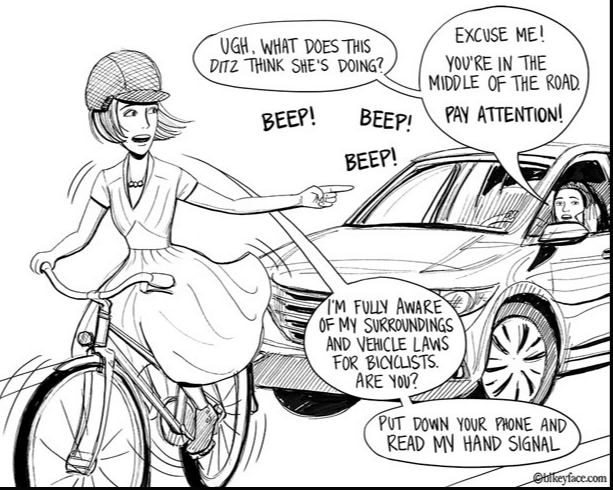
4511.52. Bicycles – issuance of ticket – points not assessed
(A) Sections 4511.01 to 4511.78, 4511.99, and 4513.01 to 4513.37, of the Revised Code that are applicable to bicycles apply whenever a bicycle is operated upon any highway or upon any path set aside for the exclusive use of bicycles.
(B) Except as provided in division (D) of this section, a bicycle operator who violates any section of the Revised Code described in division (A) of this section that is applicable to bicycles may be issued a ticket, citation, or summons by a law enforcement officer for the violation in the same manner as the operator of a motor vehicle would be cited for the same violation. A person who commits any such violation while operating a bicycle shall not have any points assessed against the person’s driver’s license, commercial driver’s license, temporary instruction permit, or probationary license under section 4510.036 of the Revised Code.
(C) Except as provided in division (D) of this section, in the case of a violation of any section of the Revised Code described in division (A) of this section by a bicycle operator or by a motor vehicle operator when the trier of fact finds that the violation by the motor vehicle operator endangered the lives of bicycle riders at the time of the violation, the court, notwithstanding any provision of the Revised Code to the contrary, may require the bicycle operator or motor vehicle operator to take and successfully complete a bicycling skills course approved by the court in addition to or in lieu of any penalty otherwise prescribed by the Revised Code for that violation.
Comment: 4511.52(A) Means that the standard traffic rules – the Rules of the Road – apply to bicycle drivers. The Rules of the Road provide an efficient algorithm of safety. Follow the algorithm and nobody gets hurt. These driving laws allow safe, fast and efficient travel on Ohio’s roadways.
Riding bicycles on sidewalks or multi-use “bike paths” is moderately safe only if done at slow speeds and extremely carefully. Ohio continues to add more miles of trails and we are encouraging cities and the state to make those paths something other than a circle. There has been a move afoot, for example, to link the Ohio River and Lake Erie. You can read about the Ohio To Erie Trail here. Path riding is not covered in this digest.
One of the very first “bicycle” cases I handled was WAY back in the mid-1980s. A cyclist had received a ticket for drunk cycling. That was clearly permitted under the law. BUT, he found that the BMV had assessed SIX POINTS against his motor vehicle license. He thought that was unfair and came to me for help. The highlighted portion of the code was NOT part of the law back then. We ended up Section (B) Means that bicycle violators may be ticketed but will not have “points” assessed against any driver’s license, except for a DWI offense. We ended up getting a Court Order mandating that the Six Points be removed and we then served the Order on the BMV and had the matter cleared up. I helped get the law changed so future cyclists didn’t get points added to the license for cycling infractions.
Section (C) allows judges to offer a cycling skills course to violators- be they bicyclists or motor vehicle operators! So far, I am unaware of ANY judge who has actually used this code section, but hey… you never know…
4511.54. Prohibition against attaching bicycles and sleds to vehicles
No person riding upon any bicycle, coaster, roller skates, sled, or toy vehicle shall attach the same or self to any streetcar, trackless trolley, or vehicle upon a roadway.
I call this the Marty McFly Rule…for obvious reasons…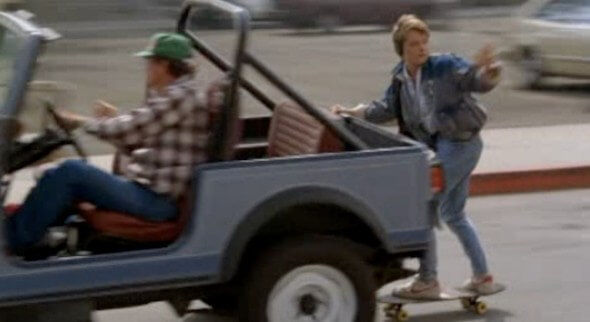
AFRAP– THE KEY OHIO BIKE LAW
4511.55. Operating bicycles and motorcycles on roadway
(A) Every person operating a bicycle upon a roadway shall ride as near to the right side of the roadway as practicable obeying all traffic rules applicable to vehicles and exercising due care when passing a standing vehicle or one proceeding in the same direction.
(B) Persons riding bicycles or motorcycles upon a roadway shall ride not more than two abreast in a single lane, except on paths or parts of roadways set aside for the exclusive use of bicycles or motorcycles.
(C) This section does not require a person operating a bicycle to ride at the edge of the roadway when it is unreasonable or unsafe to do so. Conditions that may require riding away from the edge of the roadway include when necessary to avoid fixed or moving objects, parked or moving vehicles, surface hazards, or if it otherwise is unsafe or impracticable to do so, including if the lane is too narrow for the bicycle and an overtaking vehicle to travel safely side by side within the lane.
Comment: AFRAP – or “As Far Right As Practicable” is a bit of language that is, sadly, present in traffic laws in just about every state. Legislatures DO allow bicycles to be used on the roads… but… it’s like they didn’t REALLY want to give cyclists the FULL use of the roads so they all said “OK, you can ride, but you have to stay OVER THERE, out of the way of REAL traffic…”
Section 4511.55(A) is one of the most important, and misquoted, bike laws in Ohio. Many folks [including police officers] will tell cyclists that they are required to ride “as close as possible” to the curb. That’s NOT what it says or means. The word “practicable” is an odd word, but a word that clearly incorporates the notion of SAFETY.
How does a Police Office evaluate whether you are riding “Too Far to the Left?” On cross examination I often ask the officer “Where is the magic line of “practicability” – to the right of which the cyclist is riding Legally and the the LEFT of which you believe he’s riding unlawfully?” Then… ” and then “…tell me sir, just HOW is the CYCLIST supposed to know whether his lane position is “legal” in YOUR mind if she/he is just trying to choose a lane position that is safest for her/him???”

The new paragraph (C)- added in the 2006 Better Bicycling Bill – should help reduce this confusion. There are many conditions where it is much safer to ride near the middle of the lane. It is not obviously not practicable (practice-able) to ride to the right when passing on the left, or turning left. As you ride you will need to avoid objects in the gutter, parked cars, moving vehicles, pedestrians, animals, surface or other hazards.
The biggest, somewhat secret, change to 4511.55 was to insert a “Too Narrow” exception to the AFRAP rule. This exception allows the exception to apply to just about EVERY lane in Ohio! Why? Because just about every lane in Ohio is “too narrow” to be shared side-by-side with a vehicle.
In this graphic, Florida bike advocate Keri Cafferty shows, to scale, how trucks impede on the 3 foot cushion of safety that is mandated for cyclists. She only gives 30-40 inches of space for the cyclists on far right side of the 14 foot lane… I’ll suggest that…perhaps… some of us [mysewlf included] may require a tad bit more than that… she also paints the cyclist as riding a traditional upright two-wheeler. Bicycles with 3 or more wheels can have a far wider profile.
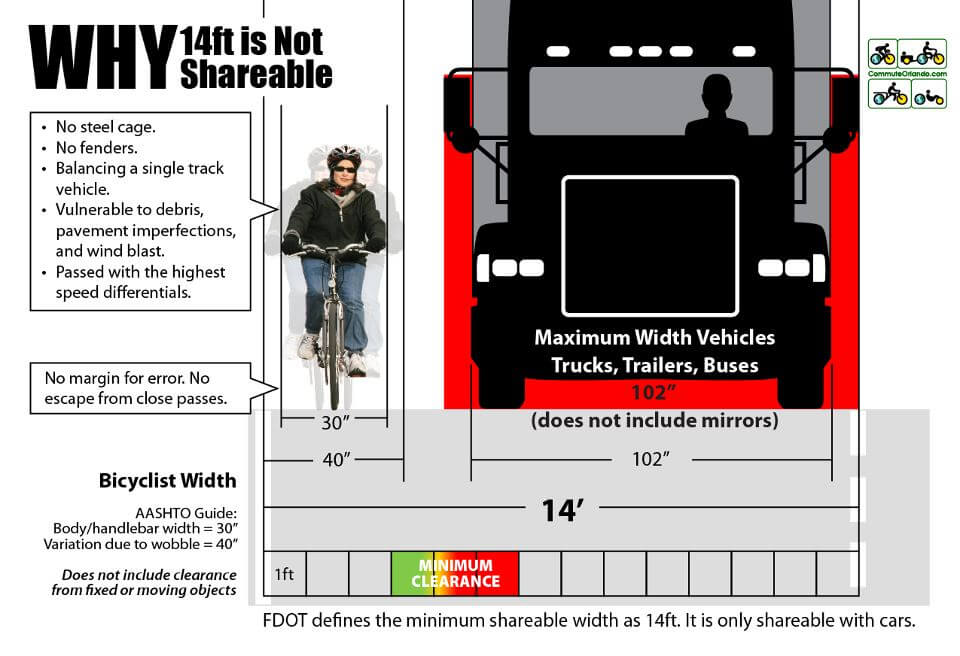
Many cycling experts will testify under oath that the BEST PRACTICE for cyclists is to NOT hug the white line, but rather to ride a some feet off the white line and well into the lane. This lane position makes the bicycle operator far more “conspicuous” to traffic behind and ahead while also keeping some roadway to the right for the rider to use in an emergency.
A cyclist who “hugs the curb” unintentionally invites motorists to pass with unsafe clearance. I’ve often written that the lane divider, or center lines, are almost like a plate of glass to a motorist passing a cyclist and if the motorist thinks she/he can squeeze in between the cyclist and the divider line, they will do it regularly. Riding a few feet off the white line, or near the middle of a narrow lane helps overtaking motorists realize that they must “break the plane” of glass and use the next lane to pass.
The real purpose of this AFRAP law is to help faster traffic keep zipping along, of course, by moving cyclists over to the right. However, NO law mandates unsafe operation and the phrase as near right as practicable is highly flexible, varying widely according to conditions. Positions well away from the edge of the road can be in compliance. The new EXCEPTION TO AFRAP found in the “too narrow” provisions of 4511.55C give cyclists in Ohio a very strong legal position if challenged.
Section 4511.55(B) allows riding two abreast. As a matter of courtesy, not law, I believe cyclists should avoid unnecessary delay to other traffic. Please be courteous and “single up” when other drivers wish to pass if such passing is safe and reasonable. By doing so, you cause the meter measuring Public Opinion to slide ever so slightly in our favor! But…
As a matter of LAW cyclists have the legal right to ride two abreast and NOT give way – at least until a vehicle starts a passing maneuver. In State v. Patrick, 153 Ohio Misc.2d 20, Tony Patrick and another rider were riding two abreast when a police officer ordered them to get off the road. They refused and Tony was ultimately stopped, TASER-ed, beaten and arrested by police. However, the trial judge dismissed all charges holding, in part, that cyclists have the right to ride two abreast. The judge in that case, a cyclist himself, stated that while cyclists SHOULD display courtesy to motorists, there is no legal requirement that they give way.
There is no violation if any of the following apply: (1) If there is no traffic being delayed; (2) If the cyclists are traveling as fast as other traffic; (3) If traffic can reasonably pass by using another lane; (4) If the lane is too narrow or it is otherwise unsafe for passing.
4511.56. Bicycle signal devices
(A) Every bicycle when in use at the times specified in section 4513.03 of the Revised Code, shall be equipped with the following:
(1) A lamp mounted on the front of either the bicycle or the operator that shall emit a white light visible from a distance of at least five hundred feet to the front and three hundred feet to the sides. A generator-powered lamp that emits light only when the bicycle is moving may be used to meet this requirement.
(2) A red reflector on the rear that shall be visible from all distances from one hundred feet to six hundred feet to the rear when directly in front of lawful lower beams of head lamps on a motor vehicle;
(3) A lamp emitting either flashing or steady red light visible from a distance of five hundred feet to the rear shall be used in addition to the red reflector. If the red lamp performs as a reflector in that it is visible as specified in division (A)(2) of this section, the red lamp may serve as the reflector and a separate reflector is not required.
(B) Additional lamps and reflectors may be used in addition to those required under division (A) of this section, except that red lamps and red reflectors shall not be used on the front of the bicycle and white lamps and white reflectors shall not be used on the rear of the bicycle.
(C) A bicycle may be equipped with a device capable of giving an audible signal, except that a bicycle shall not be equipped with nor shall any person use upon a bicycle any siren or whistle.
(D) Every bicycle shall be equipped with an adequate brake when used on a street or highway.

Comment: An unseen cyclist is in great danger. I’ve been tracking fatal bicycle crashes in Ohio for many years. Each year almost HALF of all cyclists killed are killed in the dark. Many fail to use appropriate lights. The law REQUIRES front & rear lights, and rear reflectors. You should be a BRIGHT and as CONSPICUOUS as possible if you are riding in the dark, or when weather conditions make it difficult to see. The reflectors that come with new bikes are grossly inadequate for nighttime visibility. Always use both a headlight and taillight when you ride in the dark. Today’s new lighting systems are remarkable. You can spend some money and get an unbelievably bright headlight/taillight combo… You can also tape a flashlight to your handlebars, get a red blinkie for the rear, and ride “legal.”
While there is no LAW that mandates ANY clothing choice, there are some items you can buy that help you practically glow in the dark. I have one of these ProViz jackets and it is AMAZING…

4511.711. Driving upon sidewalk area
No person shall drive any vehicle, other than a bicycle, upon a sidewalk or sidewalk area except upon a permanent or duly authorized temporary driveway.
Nothing in this section shall be construed as prohibiting local authorities from regulating the operation of bicycles within their respective jurisdictions, except that no local authority may require that bicycles be operated on sidewalks.
Comment: Sidewalk riding is controversial. In the 2006 Better Bicycling Bill we added the highlighted language to this code section. We felt it was EXTREMELY important to make sure local authorities knew that they could not “ban” bicycle operation by mandating that bicycles only be ridden on the sidewalk. By the same token, we did not want to prevent communities from banning sidewalk riding.
Sidewalk riding is generally more dangerous than riding on the roadway. Accident studies show that even low-speed sidewalk riding has about double the accident rate as riding on the road. The danger increases with speed. If you ride on the sidewalk, every intersection and even every driveway is a potential collision site. Motorists crossing your path do not look for conflicting traffic on the sidewalk, especially if you are coming from the “wrong way”.
While there is no statewide ban on sidewalk riding, there are MANY jurisdictions that have some sort of sidewalk ban in place. In some cities, you are just flat out banned from riding a bike on the sidewalk. Some ban riding in a defined “business district” and others take the approach of banning riders over a certain age from riding on the sidewalk, while allowing young children to ride. In some cities there are no crosswalk rules, some require you to dismount and walk through crosswalks.
As always, consult local listings for the laws in place for wherever YOU will be riding!
HOME RULE
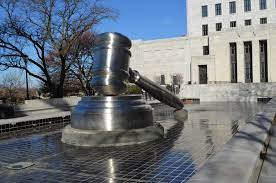
As I pointed out above, Ohio cities have the power to draft their own laws – including traffic laws, and “bike laws.” Historically, we have had problems develop when neighboring cities passed conflicting laws governing bicycle operation.
In 2006, the Ohio Bicycle Federation developed and pushed through the legislature a series of “Bike Law” reforms that, among other things, prohibited local jurisdictions from passing local bike laws that conflict with state law.
I wish I could say “Voila – problem solved” but that’s not the case.
Ohio is a “home rule” state. This means our Ohio Constitution allows local jurisdictions a lot of power in passing their own laws. Whenever there’s a conflict between state and local laws someone may file a lawsuit challenging one or the other. Often the city attorney argues that the city has the power to pass laws which differ from state law. These are long, drawn out and EXPENSIVE law suits requiring a tremendous amount of legal work. These battles are usually fought by large corporations or big special interest groups.
Two recent examples of “home rule” litigation bear this out. In the “Tow Truck Case – City of Cleveland v. State of Ohio” of 2014, the city of Cleveland had rules for tow truck operators and the state had passed a law giving the Public Utilities Commission of Ohio [PUCO] the exclusive power to regulate “for hire motor carriers.” The state included tow trucks in the definition of “for hire motor carriers.” The City of Cleveland sued the State of Ohio, claiming the state law was unconstitutional based on the constitutional “home rule” provisions. The Ohio Supreme Court agreed – holding that a sentence of state law was unconstitutional and allowing the city to regulate tow trucks.
In 2015, “Fracking” laws came under fire. The city of Munroe Falls had long standing laws governing any mining or drilling operations within its boundaries. Later, the state passed laws relative to obtaining mining permits throughout the state. Beck Energy obtained a state permit and started drilling, but was ordered to stop its “fracking” efforts by Munroe Falls based on the city’s mining ordinances. Beck sued…and won. The Supreme Court held that here state law controlled and cities throughout Ohio had no power to control mining within their boundaries.
How do Tow Trucks and Mining play into “Bike Laws,” you ask? Well, let’s say your city decides that it is “too dangerous” for you to ride your bike down Main Street during rush hour, so it passes a bike ban. You point out that state law prohibits bike bans. The city says, under Home Rule we can do what we want…
Perhaps a better example is the one I encountered in one of my cases. The City of Pickerington, near Columbus, had a law which required cyclists to use a sidewalk if one was adjacent to the road. State law clearly says that cyclists cannot be banned from most roads and that cyclists cannot be forced to use the sidewalk. My client was riding on the road. He was rear-ended by an elderly driver and suffered a severe brain injury. Pickerington Police wrote the report and held my client “at fault” for “riding on the road” when there was an adjacent sidewalk. I reached out to the City Attorney and suggested that the city’s ordinance conflicted with state law. I asked if the city really wanted to get into a long legal battle over this issue – he agreed that it did not. The report was amended to reflect that state law trumped the city ordinance and the crash case proceeded. Had the city not been as cooperative I may have had serious problems in pursuing money damages for a client who did absolutely nothing wrong.
In Dayton, Ohio, however, a recent case [which the cyclist LOST] may provide a blueprint for helping cyclists WIN “home rule” cases in the future. In Kane v. City of Dayton Mr. Kane was injured when he was run over by a City of Dayton fire truck. Kane was in the bike lane and the truck operator made a right turn across his path, pinning him under the huge truck. Kane sued the city.

This crash occurred around 30 minutes after sunset. Kane did NOT have a light on his bike. The City argued that Kane was negligent because he violated ORC 4511.56, which requires cyclists to have Lights ON at sunset. Slam dunk? Not so fast…
Kane pointed out that the City of Dayton had passed a local ordinance which said that cyclists on the road did not have to have Lights ON until ONE HOUR PAST SUNSET! Slam Dunk? … Not so Fast…
The City of Dayton came back and argued that it LACKED AUTHORITY TO PASS that law… that traffic laws could not be changed by local law and that state law trumped any inconsistent state law…
Guess what… the Court AGREED with the City of Dayton. The Court went through the Home Rule analysis required by the line of Ohio Supreme Court cases discussed above and, when it came out the other side the Court said Yes, Traffic Laws must be uniform and ANY alteration of traffic laws by a city which make that law inconsistent with state law are invalid! So the cyclist “loses” here.
[Don’t worry. The cyclist’s attorney smartly argued that the actual CAUSE of the crash had nothing to do with the cyclist not having a tiny red lighit on the back of his bike 30 minutes after sunset [when it was still “light” out]. Rather he argued that the cause of the crash was the failure of the driver to pay attention. They parties reached a significant six-figure settlement.]
While the cyclist “lost” here, this case is important as it provides a blueprint for cyclists attacking “the Stupid Laws” – mandatory single file laws, bike bans, mandatory “horn” or other equipment laws and the like. The law in Kane v Dayton was beneficial to cyclists but was struck down as being inconsistent. The same result should occur when the Stupid Laws are challenged in court.
So THERE YOU HAVE IT… a brief… OK, 6,700 word… summary of Ohio’s Bike Laws.
Now…GO OUT THERE AND RIDE YOUR BIKE!
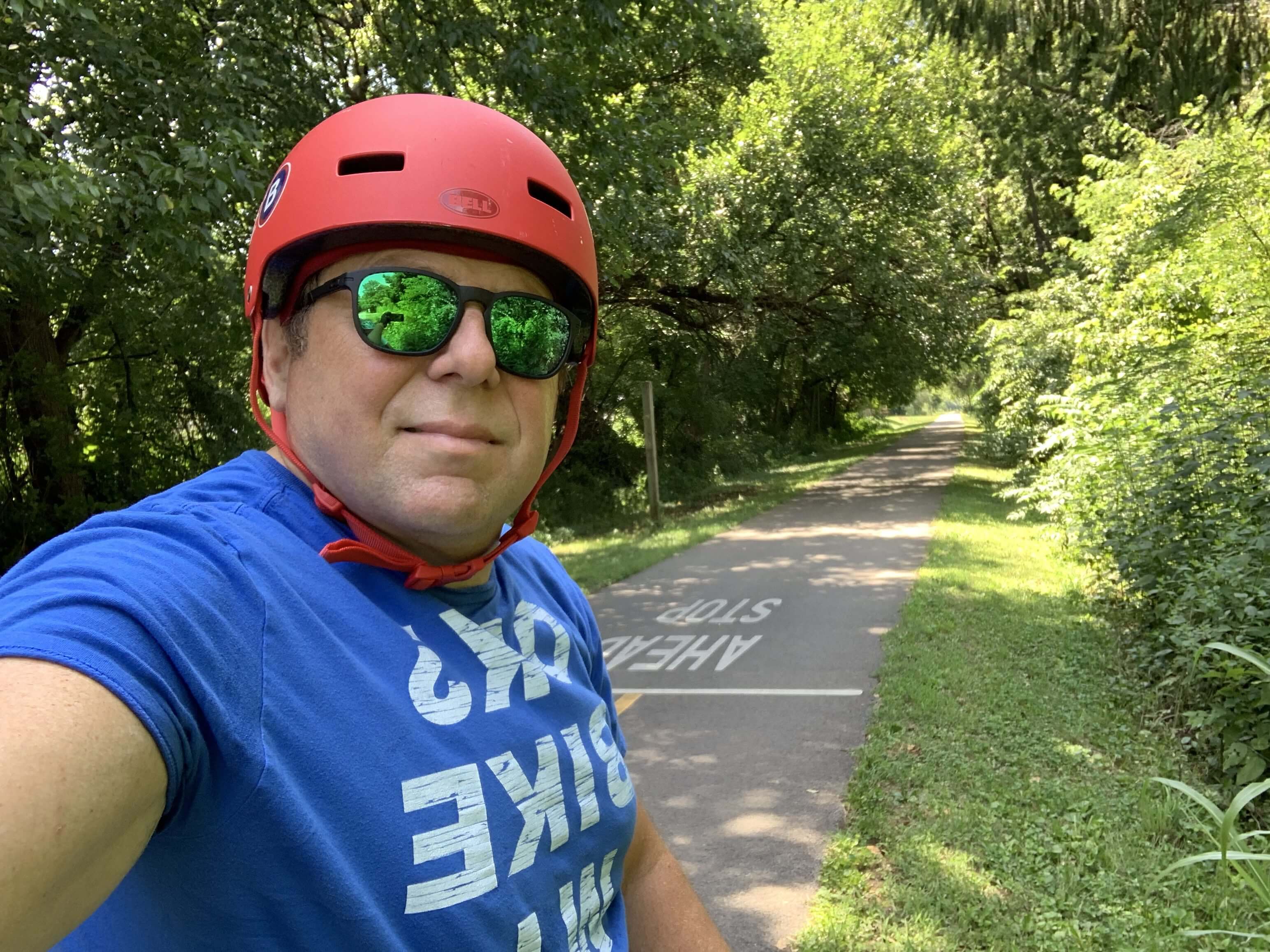
== == == == == ==
[1] Steve Magas, Ohio’s Bike Lawyer, is an avid cyclist and Ohio trial lawyer whose law practice has focused on protecting the rights of riders for more than 35 years. Steve has handled more than 450 “bike cases,” in which cyclists have been hurt or killed. Steve is a frequent speaker on bike-related legal stuff and has given his “BIKE LAW 101” class for lawyers and judges in Cleveland, Columbus, Dayton and Cincinnati.
Steve also sits on the Board of Trustees of the Ohio Bicycle Federation and regularly publishes articles on the legal aspects of cycling. Steve co-authored “Bicycling and the Law” with Olympic-cyclist-turned-lawyer, Bob Mionske and was a contributor to “Bicycle Accident Reconstruction & Litigation” by James Green.
Steve’s practice stretches throughout Ohio and he has represented cyclists in every corner of Ohio– from Cincinnati to Cleveland – Columbus to Portsmouth – Bellefontaine to Marietta – Toledo to Youngstown – Mansfield – Springfield – Akron – Canton – Ironton- Findlay – Lorain – Springfield and many more.
Steve continues to blow his trumpet daily and can be heard with a contemporary jazz group, ModernGroove, a classic music venues around Cincinnati.

